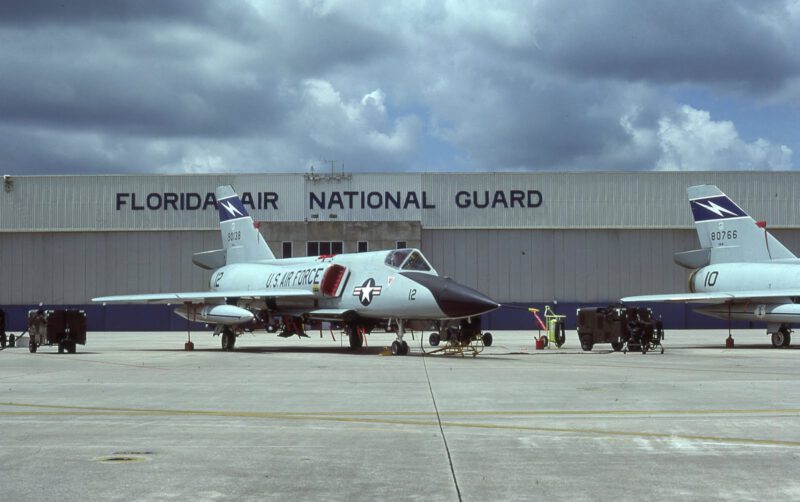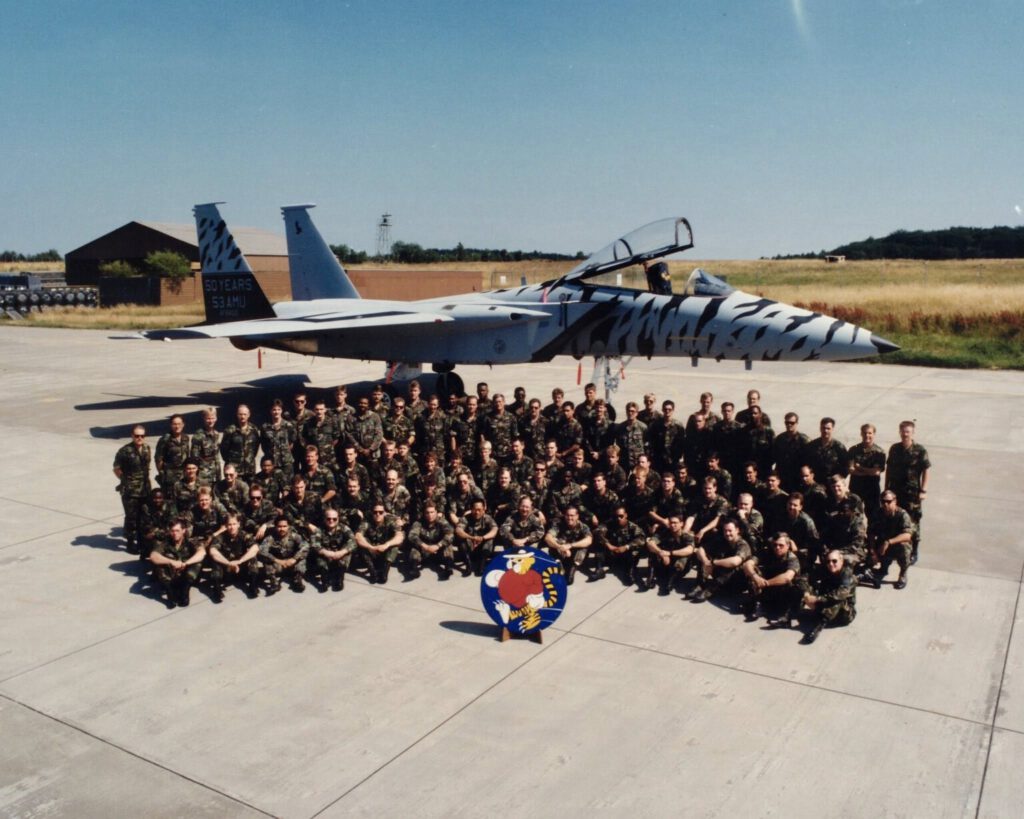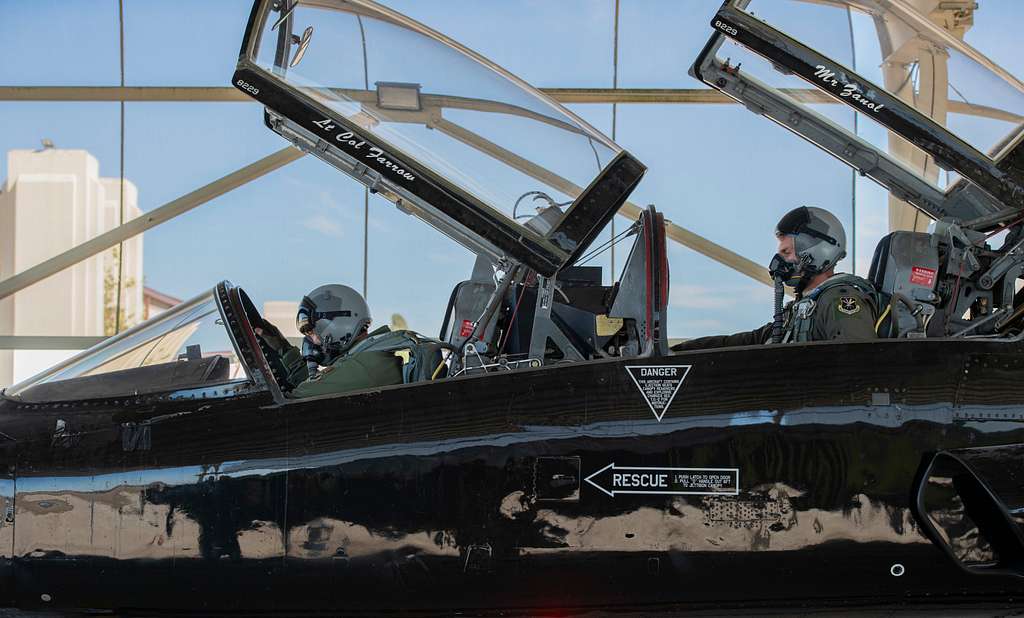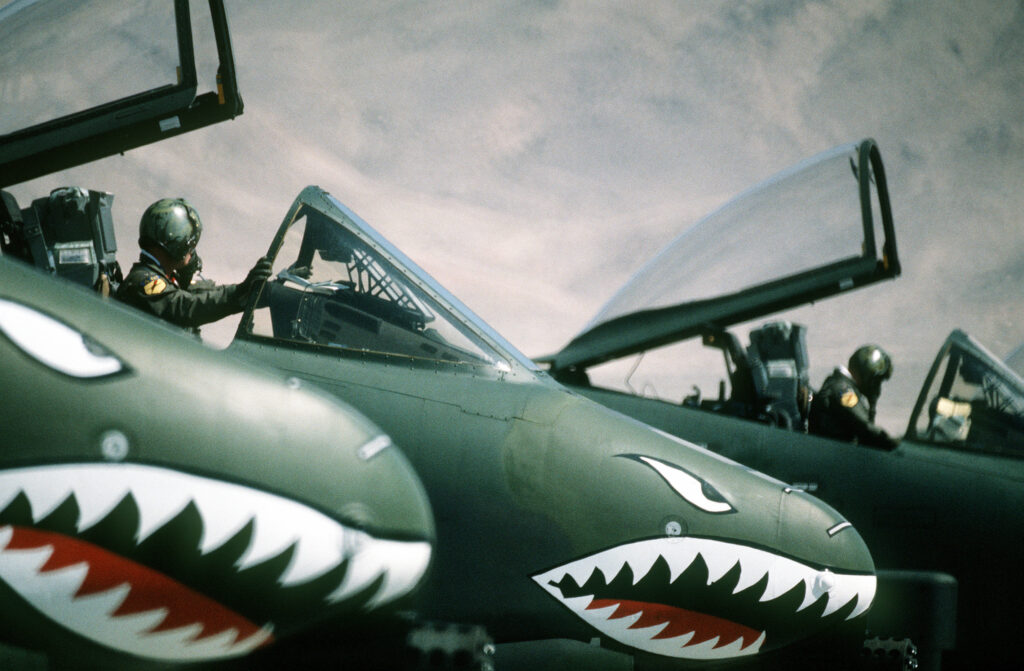On 24 May 1946, the United States Army Air Forces, in response to dramatic postwar military budget cuts imposed by President Harry S. Truman, allocated inactive unit designations to the National Guard Bureau for the formation of an Air Force National Guard. These unit designations were allotted and transferred to various State National Guard bureaus to provide them unit designations to re-establish them as Air National Guard units. National Guard Bureau document dated 16 March 1946, gave states permission to request an Army Air Forces unit allotment. Months later, Florida accepted the 159th Fighter Squadron with an authorized strength of 50 officers and 303 enlisted men. The unit was established at Imeson Airport in Jacksonville and Governor Millard F. Caldwell formally accepted the unit on 30 August 1946. Full federal recognition of the unit was granted on 9 February 1947, when it became a National Guard unit under the U.S. Army Air Forces. However, 18 September 1947 is considered to be the Florida Air National Guard’s official birth, concurrent with the establishment of the United States Air Force as a separate branch of the United States military under the National Security Act of 1947.
In 1954, the 159th relinquished their F-51s for F-80 Shooting Stars and in 1956 upgraded again to F-86 Sabres. On 1 July 1956, the 159th Fighter-Interceptor Squadron was authorized to expand to a group level organization and the 125th Fighter-Interceptor Group (125 FIG) was established by the National Guard Bureau, with the 159 FIS becoming the group’s flying squadron. Both organizations remained operationally gained by the Air Defense Command (ADC) and in 1960 transitioned to the F-102 Delta Dagger.
In 1968, ADC was renamed Aerospace Defense Command and remained the 125 FIG’s gaining command. That same year, the 125 FIG and its F-102 aircraft relocated from the soon-to-be closing Imeson Airport to a newly constructed military installation at the new Jacksonville International Airport. This was followed by another aircraft transition in 1974 to the F-106 Delta Dart.
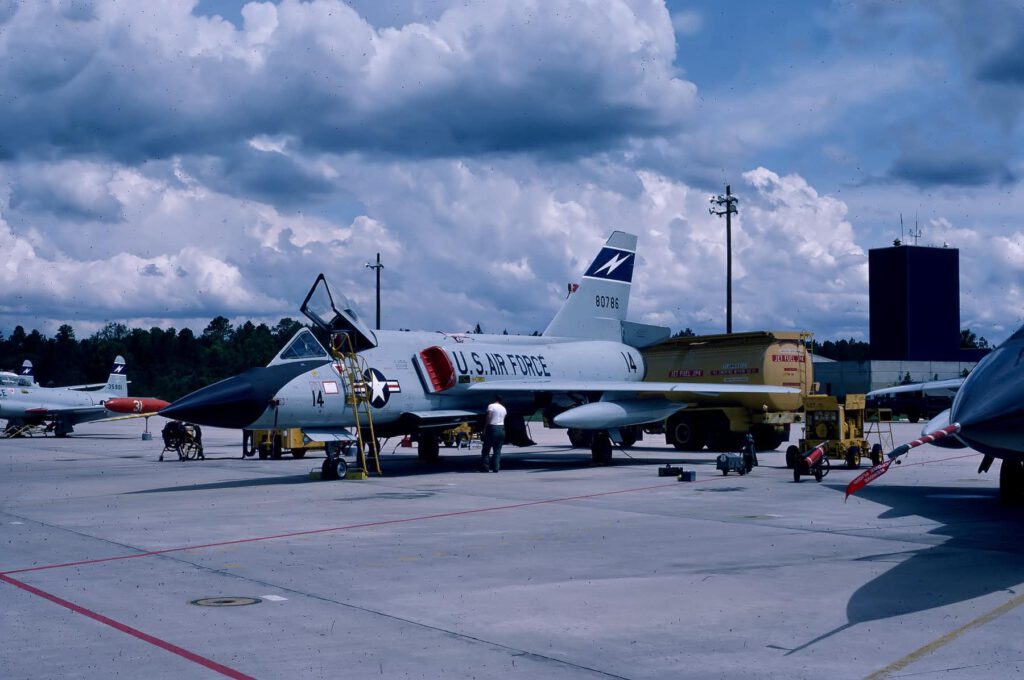
With the disestablishment of ADC in October 1979, operational clamancy of the 125 FIG was shifted to Tactical Air Command (TAC) and the unit transitioned to the F-16 Fighting Falcon in its F-16A and F-16B Air Defense Fighter (F-16 ADF) variant in 1987. With the disestablishment of TAC in 1992, the 125 FIG was renamed the 125th Fighter Group (125 FG) and in October 1995 it was expanded to a wing level organization and renamed the 125th Fighter Wing (125 FW), operationally gained by Air Combat Command (ACC). The same year, the 125th also transitioned from the F-16 to the F-15A and F-15B Eagle. This was followed by later transition to the F-15A and F-15B Eagle Multi-Stage Improvement Program (MSIP) aircraft, and then to the F-15C and F-15D Eagle aircraft that the 125 FW continues to fly today.
Another Florida ANG flying unit, originally designated as Detachment 1, Southeast Air Defense Sector (Det 1, SEADS), is the 325th Fighter Wing Associate Unit (325 FW AU), which was officially activated on 1 October 1999 at Tyndall Air Force Base, Florida. The unit’s initial mission was to train active duty and Air National Guard pilots to fly the F-15 Eagle in its F-15A/B and F-15C/D variants in the air dominance role. The Associate Unit members were completely integrated into all aspects of the active duty 2nd, 43rd, and 95th Fighter Squadrons, as well as the 325th Operations Support Squadron. Today, the unit continues that mission training responsibility for active duty Air Force, Air Force Reserve and Air National Guard pilots to fly the F-22 Raptor in the air dominance role. The associate unit is operationally controlled by the 325th Operations Group under the overall direction of the 325th Fighter Wing.
After the September 11th, 2001 terrorist attacks on the United States, elements of every Air National Guard unit in Florida have been activated in support of the Global War on Terrorism. Flight crews, aircraft maintenance personnel, communications technicians, air controllers and air security personnel were also engaged in Operation Noble Eagle air defense overflights of major United States cities. Florida ANG units have been deployed overseas as part of Operation Enduring Freedom in Afghanistan and Operation Iraqi Freedom in Iraq, as well as other overseas locations as directed.
The Florida Air National Guard consists of the following major units:
125th Fighter Wing
On 1 July 1956, the Florida Air National Guard’s 159th Fighter-Interceptor Squadron (159 FIS) was authorized to expand to a group level organization and the 125th Fighter-Interceptor Group (125 FIG) was established by the National Guard Bureau, the 159 FIS becoming the group’s flying squadron. Other squadrons and squadron equivalents assigned to the group were the 125th Headquarters, 125th Material Squadron (Maintenance), 125th Combat Support Squadron, and the 125th USAF Dispensary.
With the establishment of the 125 FIG, the unit converted to the F-86D Sabre (also known as the “Dog” version of the Sabre) with the primary mission of continental air defense of the southeastern United States. In 1958, the 125th became the first Air National Guard unit to earn the right to compete in the Air Defense Command’s annual WILLIAM TELL Weapons Meet and was the first team ever to fire a perfect score in that competition.
In July 1960, the 125th converted from the F-86D to the all-weather, supersonic F-102A and F-102B Delta Dagger. In 1965, as an after effect of the Cuban Missile Crisis and given increased Soviet Air Force aircraft operations in Cuba, the 125 FIG established Operating Location Alpha Alpha (OL-AA) for 125 FIG, Detachment 1, at what was then Homestead Air Force Base, Florida to provide air defense ready alert fighter aircraft in the southern portion of Florida. This same alert detachment continues operations today at the present day Homestead Air Reserve Base with no less than two 125th F-15C aircraft, pilots, and support personnel periodically rotated from home station in Jacksonville.
In January 1968, Air Defense Command was renamed the Aerospace Defense Command (ADC) and continued to be the 125 FIG’s gaining command. Also in 1968, following completion of the new Jacksonville International Airport, the 125 FIG relocated from their military cantonment area at Jacksonville’s former Imeson Airport to a newly constructed military installation, the current Jacksonville Air National Guard Base, at the new airport. With the concurrent closure of Imeson Airport to all flight operations and its conversion to an industrial park, the 125 FIG vacated all of its former facilities at Imeson Airport and, via the General Services Administration, turned over same to the City of Jacksonville.
In July 1974, the 125 FIG commenced conversion to the F-106A and F-106B Delta Dart. Only one year after the F-106 conversion, the unit again earned the right to compete in that year’s annual Air Force air-to-air weapons competition, WILLIAM TELL ’76, at Tyndall AFB, Florida.
In March 1980, ADC was inactivated and the USAF air defense mission was transferred to Tactical Air Command (TAC). TAC then became the gaining command for the 125 FIG.
In April 1987, the 125th converted to the F-16A and F-16B Fighting Falcon, a multi-role fighter. The 125th’s aircraft were further modified as the F-16ADF, making the aircraft specifically designed for the Air Defense role with the removal of air-to-ground weapons capability. The 125th was the first ANG unit to assume NORAD Air Defense Alert with the F-16ADF, the first operational F-16ADF unit to employ the AIM-7 Sparrow III missile, and the first F-16ADF unit to sit alert with the AIM-7 missile.
With the disestablishment of Tactical Air Command (TAC) in 1992, the 125 FIG’s gaining command changed again to the newly created Air Combat Command (ACC). As part of this change, the unit’s designation was changed to 125th Fighter Group (125 FG). With creation of the USAF “objective wing” construct in the early 1990s, the bulk of all Air National Guard groups with operational flying missions were redesignated as wings. As a result, the 125 FG was subsequently redesignated as the 125th Fighter Wing (125 FW), the designation it continues to hold today.
In June 1995, the 125 FW converted to the F-15A and F-15B Eagle, a fighter aircraft which added significant air superiority capability to the Continental NORAD Region (CONR) Air Defense mission. During the late 1990s, the 125 FW was also fully integrated into the USAF Air and Space Expeditionary Force (AEF) construct and routinely deployed aircraft and personnel to the 363rd Air Expeditionary Wing (363 AEW) at Prince Sultan Air Base, Al Kharj, Kingdom of Saudi Arabia in support of Operation SOUTHERN WATCH, enforcing the United Nations Security Council Resolutions that established a No Fly Zone over southern Iraq following Operation DESERT STORM that was monitored by a combination of USAF, U.S. Navy, U.S. Marine Corps, Royal Air Force, French Air Force, and Royal Saudi Air Force aircraft. Since 11 September 2001, the wing has also been extensively involved in Operation NOBLE EAGLE, performing its historic continental air defense mission, as well as having periodically deployed aircraft and personnel to U.S. Central Command Air Forces (USCENTAF), later renamed U.S. Air Forces Central (USAFCENT), in Southwest Asia in support of Operation ENDURING FREEDOM and IRAQI FREEDOM until their conclusion.
On a daily basis in the United States, the 125 FW is responsible for the maintenance of a USNORTHCOM / NORAD Air Defense Alert mission at both its home station in Jacksonville ANGB and at an additional operating location at Homestead ARB, Florida. In this capacity, the wing provides armed F-15 aircraft capable of intercepting, identifying, and, if necessary, destroying unknown aircraft which penetrate sovereign U.S. airspace. In the past, this threat has included Soviet Tu-95 BEAR and Tu-22 BLACKJACK bombers, various Soviet-built Cuban Air Force fighters, and civilian narcotics traffickers of various nationalities.
When it initially converted to the Air Defense Fighter (ADF) variant of the F-16A, the 125 FW was the first operational NORAD Air Defense Alert unit to employ the AIM-7 Sparrow III missile, the first F-16ADF unit to sit alert with the AIM-7, and the first unit to deploy to the former Howard AFB, Panama in support of JCS-directed operation CORONET NIGHTHAWK using enhanced identification tactics. In October 1995, the 125 FW became the first unit ever to complete a transition from one fourth generation fighter to another fourth generation fighter as it transitioned from the F-16ADF to the F-15A/B. In April 1997, the 125 FW became the first Air Defense unit to employ as Blue Air in an Offensive Counter Air (OCA) role, integrated with an active duty unit during a RED FLAG exercise at Nellis AFB, Nevada.
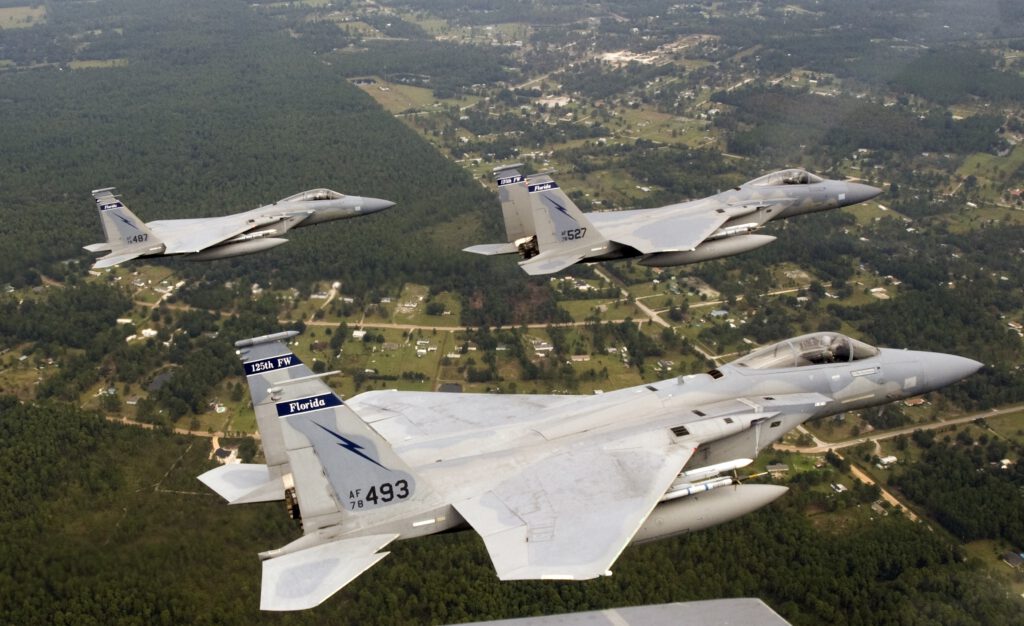
The 125 FW was rated “Outstanding” during an Alert Force Evaluation by the North American Aerospace Defense Command Inspector General in November 1997. This was the highest rating ever given by NORAD. In January 1998, the 125th Fighter Wing received an “Outstanding” on its Operational Readiness Inspection (ORI). During this period, the wing also participated in Operation SOUTHERN WATCH, routinely deploying to Prince Sultan Air Base, Saudi Arabia for operational relief of Regular Air Force F-15C/D units. In 2000, the wing began transitioning to the F-15A/B Multistage Improvement Program (MSIP) variant of the F-15A and F-15B Eagle, and in 2006 transitioned again to the newer F-15C and F-15D models of the Eagle that it currently flies. In 2020, the 125 FW was awarded the Air Force Meritorious Unit Award by ACC.
As the 125 FIG, the unit also operated and maintained a single C-131 Samaritan as an Operational Support Airlift (OSA) aircraft until the late 1980s. As the 125 FIG, 125 FG and 125 FW, the unit subsequently operated a single C-130E Hercules, followed by a single WC-130H Hercules aircraft (the latter with weather reconnaissance equipment removed) for logistical support of the wing, geographically separated units (GSUs) of the Florida Air National Guard, and additional “as needed” airlift support to the Florida Army National Guard. This capability is currently gapped in the Florida Air National Guard until another similar support aircraft can be assigned with fixed-wing aviation elements of the Florida Army National Guard currently providing principal OSA assets from an aviation support facility in St. Augustine. The 125 FW also operates a single RC-26B Metroliner reconnaissance aircraft in support of state and federal law enforcement agencies under Title 32 USC authority.
In November 2014, in order to comply with Air Force Instruction 38-101, several geographically separated units (GSUs) of the Florida Air National Guard were administratively realigned under the 125th Fighter Wing. These included the 114th Space Control Squadron at Patrick Space Force Base, the 290th Joint Communications Support Squadron at MacDill AFB and the 202nd RED HORSE Squadron, 159th Weather Flight and 131st Training Flight at Camp Blanding. The 101st Air and Space Operations Group and HQ FLANG Detachment 1 at Tyndall AFB were unaffected by these changes.
The 249th Special Operations Squadron was activated at Hurlburt Field on 28 August 2020. The squadron is an Associate unit operating active duty CV-22B Osprey belonging to the 1st Special Operations Wing and is operationally gained by Air Force Special Operations Command (AFSOC).Upon its establishment, the 249 SOS was also administratively aligned under the 125 FW per AFI 38-101.
On 27 July 2021, the Department of the Air Force signed a Record of Decision announcing that the 125 FW will eventually receive twenty F–35A Lightning II aircraft to replace its extant F-15Cs and F-15Ds. Historically an air defense/air superiority unit focused on an air-to-air mission, this change will necessitate the 125 FW also becoming proficient in an air-to-ground mission and associated air-to-ground ordnance employment for the first time in over seventy years.
On 15 Jan 2023, an additional group level organization, the 125th Regional Support Group (125 RSG) was established within the 125 FW as a geographically separated unit (GSU) at the Camp Blanding Joint Training Center.[2] The 125 RSG will have oversight of all FLANG squadrons and flights at Camp Blanding as well as the 290 JCSS at MacDill AFB. Other GSU elements of the 125 FW will continue to remain under the 125 OG pursuant to AFI 38-101.
The 125 FW continues to regularly participates in RED FLAG events at the USAF Warfare Center at Nellis AFB, Nevada and the Exercise SENTRY SAVANNAH and the WILLIAM TELL air-to-air weapons meet at the Georgia Air National Guard’s Air Dominance Center at Savannah ANGB as part of its on-going readiness program.
The first F-35A arrived on March 4, 2025.
125th Fighter Wing Detachment 1 (125 FW Det 1)
Stationed at: Homestead Air Reserve Base, Homestead
Rotational F-15 aircraft, pilots and maintenance crews from the 125 FW at Jacksonville, manning FL ANG Operating Location Alfa Alfa (OL-AA), an air defense Alert Facility at Homestead ARB
Operationally Gained by: Air Combat Command (ACC)
Provides the Continental NORAD Region (CONR) commander with rapid response to invasions of the sovereign airspace of the southern United States and to respond with appropriate air defense measures.
Florida Air National Guard photos
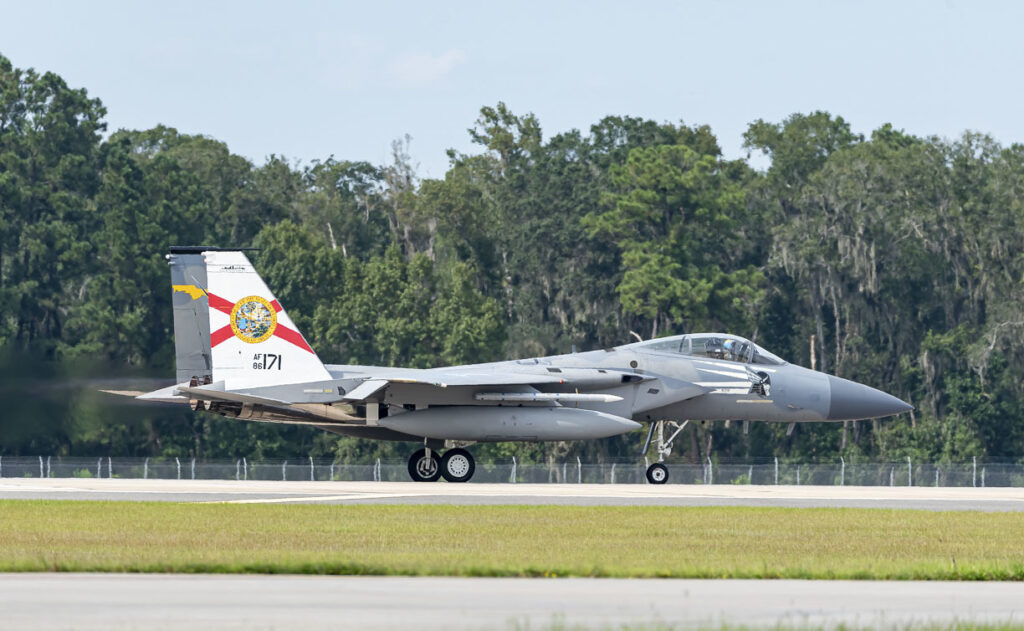
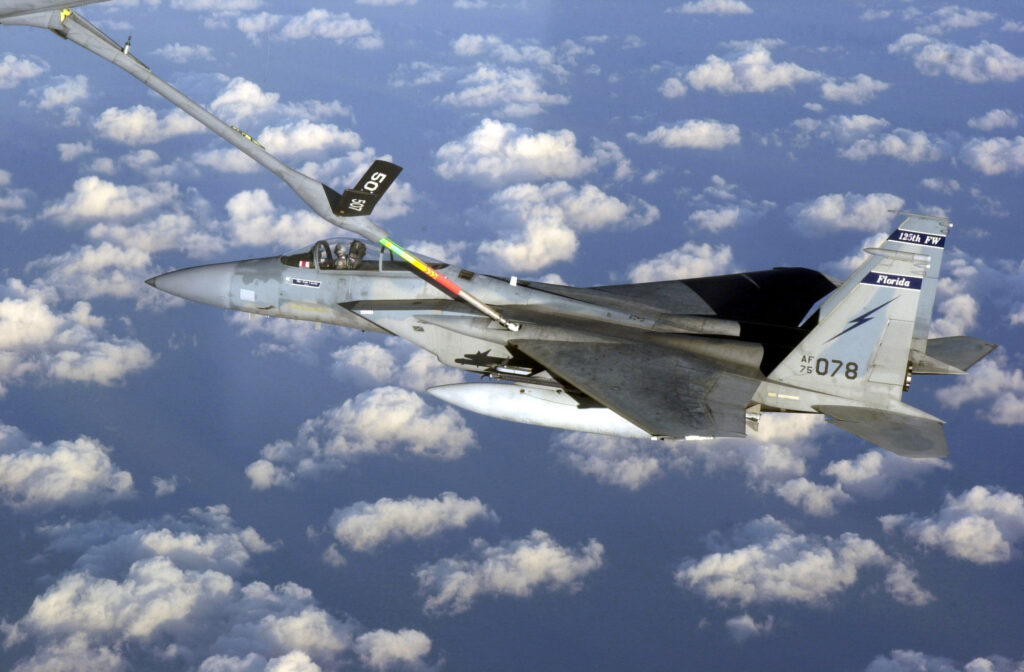
Looking for more Florida ANG Photos especially from the theF-106 and F-16 era
